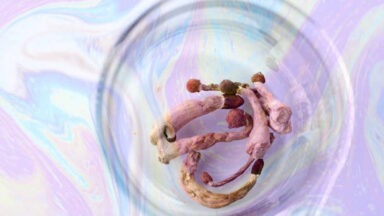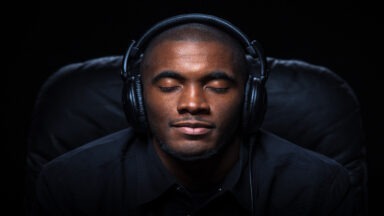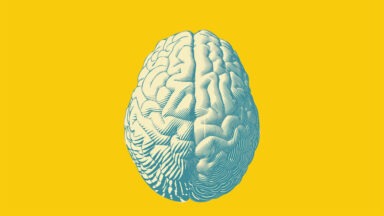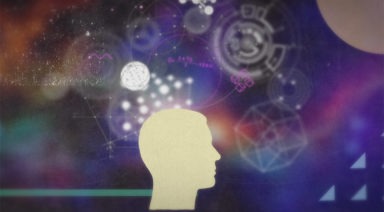The 3 Pillars of Life: A Good Night’s Sleep

“There are three supports (pillars) of life. They are food, sleep and observance of brahmacharya. Being supported by these the body is endowed with strength, complexion and growth and this continues up till the full span of life provided a person does not indulge in regimens detrimental to health.”
Caraka Samhita
Previously, I wrote about the first pillar of life and spoke to the importance of discovering the foods that are right for you and how to maintain your digestive fire in order to absorb the prana (life energy) and useful nutrients from your food. If you didn’t read the previous article, you might go back and review that before jumping into part two.
For this article, I will take you into the second pillar of life, which is sleep! Sleep is an essential part of life and has a strong influence on your physical and mental health and ultimately helps you age more gracefully. Since everyone is unique, you will all need different amounts of sleep in order to thrive, so please note that what I am offering is general support based on my experience as a nutritionist and Ayurveda Health Educator.
When sleep gets compromised due to improper diet, heat, young children, full moons, or stress, it can make everything in life feel like an uphill battle. Sleep is so important that missing even a single night of sleep can create an adverse effect on your immune system, increase your blood pressure, make it more challenging to deal with “normal” daily stress, decrease your motor skills, disrupt your appetite-depressing hormones and affect your ability to relax at night. Can you see why it is one of life’s three pillars? Basically, without sleep we quickly fall apart!
After teaching several yoga classes this week, I had numerous students mention that they were currently struggling with insomnia. In Ayurveda we look at insomnia as vata dosha (air + space imbalance). It’s not uncommon to see more insomnia in the fall as it is also considered a vata time where the air outside may be getting more active, cool, and/or dry, and more space opens in nature as the leave all fall from the trees. The new space in seasonal transition can create a surge of excess upward moving energy in a vata imbalanced person and can contribute to someone experiencing insomnia.
If you or someone you know is struggling with sleep imbalances, here are a few general suggestions that may reduce the vata condition and help restore your sense of well-being. For a more individualized version of this vata-reducing program, considering booking a private with me or your local Ayurvedic practitioner.
Vata-Reducing Routine to Decrease Insomnia
- Avoid any caffeine after 10:00 a.m. or all together until your sleep is back to normal.
- Eat your largest meal in the afternoon and eat a bowl of warm broth-based soup for dinner. It’s best if your bowl in no larger than your two palms put together and is free of spicy chili peppers or garlic, both of which are considered rajasic (stimulating).
- Avoid alcohol late in the evening. If you are going to drink alcohol, it is best to do it around happy hour time with plenty of room temperature water to help you stay hydrated and clear-headed before bed.
- Establish a healthy, warm whole foods diet for a couple of weeks, reducing all processed foods. Heated foods are an important part of a vata-reducing diet, so until your sleep pattern is back to normal, considering warming each meal and being very generous with your oils like ghee, coconut, sesame, and safflower when cooking and olive oil or flax seed when your food is done being cooked.
- Skip dessert as sugar can also be stimulating and affect your ability to drop deep into sleep.
- Exercise daily. I recommend forms of movement that get your heart rate up for 20 minutes each day and some yoga poses that emphasis forward bends, squats, and twists to encourage energy (prana) to move away from the head.
- Evening routine: Keep your computer turned off, especially one hour before bed.
- Practice moderation with electricity and embrace candlelight in your home during the evening to help slow you down.
- Treat yourself to a warm oil massage before an evening shower or bath. I recommend raw organic sesame oil or a vata blend from your favorite store that sells Ayurvedic products. Be sure to give your focused attention to rubbing the oil into your skin! Your nervous system is close to the skin so when you rub your limbs and torso with warm oil, it begins to calm the nervous system, which is essential for good sleep. A follow-up warm shower or bath will help the skin absorb the oil. Avoid washing off the oil with soap. Lastly, if you take baths at night, be sure to avoid super hot bath water or soaking too long as too much heat can be stimulating.
- There are so many herbs out there that have can have a positive effect on your sleep, the most common being chamomile, valerian, skullcap, and ashwagandha. I highly recommend taking one of them as a tea or in the tincture form before bedtime. Also, you could try abhyanga, an Ayurvedic sleep aid massage oil.
- Drink a warm cup of cow’s milk (non-homogenized vat pasteurized, chemical/antibiotic/hormone-free) or almond milk with spices before bed. Milk has special peptides and proteins that activate the brain’s receptors related to deep sleep cycles.
- For a couple of weeks, see if you can establish a sleep, exercise, eat, work, and then unwind routine that matches the natural rhythm of the day. For example, going to bed by 10:00 pm in the fall, waking up around 6:00 am, meditation followed by some yoga, breakfast, work, hydrate, lunch, hydrate, work or creative time, evening exercise outside, soup for dinner, oil massage before shower, and then read or write before bed.
Consider what might be at the root of your sleep disturbance and spend time getting the support you need to unwind from the stressor.
13 Indigo Children Traits & Signs of a New Age Revolutionary

What is an Indigo Child?
An Indigo Child or Indigo Kid is an upgraded blueprint of humanity, a term that was coined by Nancy Ann Tappe, a parapsychologist, synesthete, and psychic, who developed the new-age concept to describe the aura colors of these very different kids. Tappe’s concept was further developed by Lee Carroll and Jan Tober, both international authors and renowned educators and lecturers. Previously, auric fields were expected shades of the rainbow, but the Indigos’ field was dominated by a royal blue color. Thus, establishing a change of course in human evolution and their indigo aura.
Gifted children, on a clear mission to challenge and shift reality, first began appearing in the 1970s. Beyond psychic awareness, they are highly driven and creative with a perception that sees through the established norms of society. Old souls indeed, their mission is clearly laid out to shake up the modern world and pave the way for future generations to create greater peace and harmony for all.
Both of these generations of “children” are well into their teens and adulthood, so don’t allow the label to dissuade you from exploring the concept of Indigo Children.





































